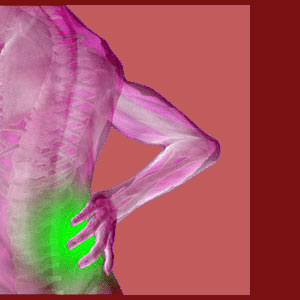
Rheumatoid arthritis facet joints can be compromised in functionality and are often acutely painful upon spinal movement. RA, unlike common osteoarthritis, is always a pathological condition and is classified as an autoimmune disease. Rheumatoid arthritis is not common in the general population, but when it exists, it often attacks the spinal facet joints, along with assaulting other major bodily joints.
Rheumatoid arthritis is an inflammatory version of arthritic change wherein the body attacks itself, causing damage that might be irreparable in some instances. RA is known to be a major cause of disability and is difficult to treat, although science continues to pursue new avenues of therapeutic intervention.
This essay investigates rheumatoid arthritis in the spinal facet joints. We will explain the facts of RA, the symptoms it creates and discuss some treatment options that might produce the best outcomes with the least amount of collateral risk.
Factsheet on Rheumatoid Arthritis Facet Joints
RA is an autoimmune variety of inflammatory arthritis that causes joint swelling, hypertrophy and deterioration. Rheumatoid arthritis is diagnosed using a strict checklist of symptoms, but many patients are still misdiagnosed with the condition. In some cases, the person truly has rheumatoid arthritis, but does not meet the minimum characteristics of expression needed to render a formal diagnosis. In other cases, the patient is actually suffering from another related autoimmune disease and is mistakenly labeled with RA instead. Common conditions that often appear as rheumatoid arthritis include ankylosing spondylitis, gout, lupus and Lyme disease.
As far as causation, many doctors suspect genetic links, yet no definitive evidence of this relationship has been proven to exist. Other doctors have focused on exposure to contaminants, viruses or bacteria, but once again, little evidence exists establishing these theories. The most enlightened view tends to relate the existence of all autoimmune diseases to life stresses, personality type and tendency to repress emotions. These factors have been identified in the majority of patients and transcend the purely physical characteristics that do not seem to apply universally or even nearly universally.
Spinal Symptoms of Rheumatoid Arthritis
RA is a form of inflammatory arthritic change that produces nodules beneath the skin and provides visual evidence of its occurrence. The spinal joints will appear swollen, misshapen and sometimes red. In some cases, heat will be expressed through the skin, as well.
Patients will likely experience pain, which may be debilitating. The spinal joints may organically fuse in some cases and will decrease in mobility and functionality in virtually all cases. Joint stiffness and a feeling of heaviness are likely to exist in all affected regions of the spine. RA might attack a specific spinal level, a regional area or virtually the entire backbone. Damage to the joints might be permanent or might be transitory.
Many patients are affected by collateral consequences of rheumatoid arthritis, as well. These related symptoms include spinal cord or spinal nerve compression, the formation of atypical spinal curvatures, such as scoliosis, hyperlordosis or hyperkyphosis, and the increased chance for vertebral fracture in patients who also demonstrate low bone density or bone porosity issues.
Treatment for Rheumatoid Arthritis Facet Joints
Traditional medicine uses a variety of powerful and toxic drugs to treat RA, in addition to symptomatic drugs to minimize its effects. DMARDS are one of the major classes of drug therapies used to halt the progression of rheumatoid arthritis and these substances are well known to create terrible health consequences in many patients. Add to this the opioid pain relievers, anti-inflammatories and other pharmacological therapies, and the combined negative effects of treatment might be worse than the effects of the disease itself.
Physical therapy and self-managed exercise therapy are valuable additions and have proven benefits for most patients. Exercise might not be comfortable to perform, but shows promise for increasing functionality and even slowing progress of joint damage in affected patients.
Massage, acupuncture and chiropractic are complementary medical practices that also might provide symptomatic benefits for RA sufferers without any risk.
Evidence now shows that RA has a strong link to the mindbody processes and some patients (including a few famous ones) have reported excellent results using knowledge therapy and other mindbody interventions instead of traditional dangerous medical treatment using drugs. Some patients even cite complete amelioration of symptoms over long timelines, including decreased rheumatoid factor blood count results using purely mindbody therapies.
Facet Joint Pain > Causes of Facet Joint Pain > Rheumatoid Arthritis Facet Joints





